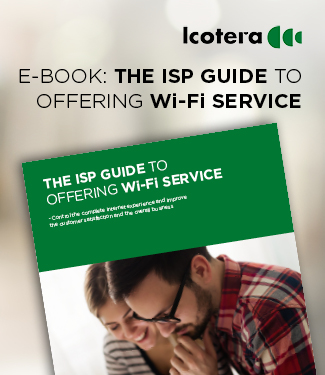In the world of IT and telecoms, suppliers are forever proclaiming the latest technology to be the industry's Holy Grail. Case in point: Wi-Fi 6. In reality, however, most internet service providers (ISPs and end-users are not ready for Wi-Fi 6 yet, and very few devices on the market actually support the new standard. ISPs should therefore rather focus on providing end-users with the best user experience – and at the right cost. In many cases this is achieved by supplying a cost-effective, well-managed and monitored, high-end Wi-Fi 5 solution, advocates Erik Søe-Pedersen, Chief Commercial Officer at Icotera.
Wi-Fi 6 is the new buzzword, and this is only natural since the standard, with its high-speed internet connections and cutting-edge handset devices, brings significant improvements to the in-home Wi-Fi experience.
- When we see a jump from one standard to another, in this case from 802.11ac to 802.11ax, all eyes are naturally on the new standard. And to some extent the attention is justified, because Wi-Fi 6, as the new standard is often called, does have enormous potential for delivering internet that is faster than ever. The challenge arises when we get so allured by the promises of Wi-Fi 6 that we overlook one very important factor, Søe-Pedersen says.
- In many countries where the predominant speeds into the home are 500mbit or less, the need for synchronized speed all the way out to the end device is met through a cost-effective Wi-Fi 5 solution. For the majority of end-users investing in a Wi-Fi 6 setup will be a costly affair, where the investment simply does not justify the outcome. And the truth is very few end-users actually need it right now.
The name of the Wi-Fi standard is not important
According to Søe-Pedersen, what the end-users really need is stable in-home Wi-Fi performance. They care little about which standard they are running.
- In the end, what matters for end-users is not whether the name of their Wi-Fi standard is 5 or 6. They want good, stable in-home performance with no black holes. So, naturally, when they are exposed to attractive promises of high-speed internet, it is completely understandable that their interest in Wi-Fi 6 is awakened. But in cases where the speed into the home is the limit, even new devices cannot utilize the next generation of Wi-Fi possibilities. Therefore, focus for ISPs should not be on upgrading the speed into the home; it should be on upgrading the Wi-Fi, he explains.
There are other – and better – ways of solving in-home performance issues. In doing so, Wi-Fi 5 still plays an important role, according to Icotera's CCO.
- Wi-Fi 5 is still the leading technology on the market, and it is without doubt the most cost-effective way for ISPs to offer the best performance compared to price. In reality, many end-users are still running Wi-Fi 4. And amongst those who have upgraded to Wi-Fi 5, we see a great deal of them who are still running a first wave 5 GHz set-up that is powerful enough to support the devices that the end-users have.
- Therefore, rather than talking only about Wi-Fi 6, let's talk about how we can provide end-users with the right Wi-Fi experience - being either a Wi-Fi 5 or a Wi-Fi 6 solution.
Easy Wi-Fi 5 upgrade with few resources
For ISPs it is easy to upgrade existing customers to Wi-Fi 5.
- Adding a new access point to the end-user's CPE setup will make it possible to turn on Wi-Fi 5. The ISP just sends a new device and instructs the end-user to connect it to the router that is already installed in the home. No truck roll is necessary, because the ISP only has to make a minor programming effort with the current router, replicate network name SSID and password, and then the new Wi-Fi will be available without hassle for the customer, Søe-Pedersen explains.
The effort required from the ISP is thus relatively little, but there are many advantages from a business perspective, Søe-Pedersen reveals.
- Improved speed and in-home Wi-Fi experience will increase customer satisfaction and thereby also customer retention. It also means that the ISP will spend less resources on expensive support costs, as a natural consequence of better in-home performance is that end-users will call the help desk less."
Interested in which Wi-Fi solution that fits your business?
Give us a call at +45 70 10 00 33 or reach out for Erik Søe-Pedersen at esp@icotera.com.
Read more on our Wi-Fi 5 products here:
Ethernet Router: i4850
Wi-Fi Access point: i3550
WANT to Deliver an internet experience – or just a box?
By taking control of the complete internet delivery, from the fiber connection to the Wi-Fi service, ISPs can create happy end-consumers having high-performing Wi-Fi with full in-home coverage – and make it a profitable business at the same time.
- You might also find our guide with dos and don’ts for ISPs delivering Wi-Fi interesting.
Find the guide: 5 mistakes to avoid when offering Wi-Fi here


